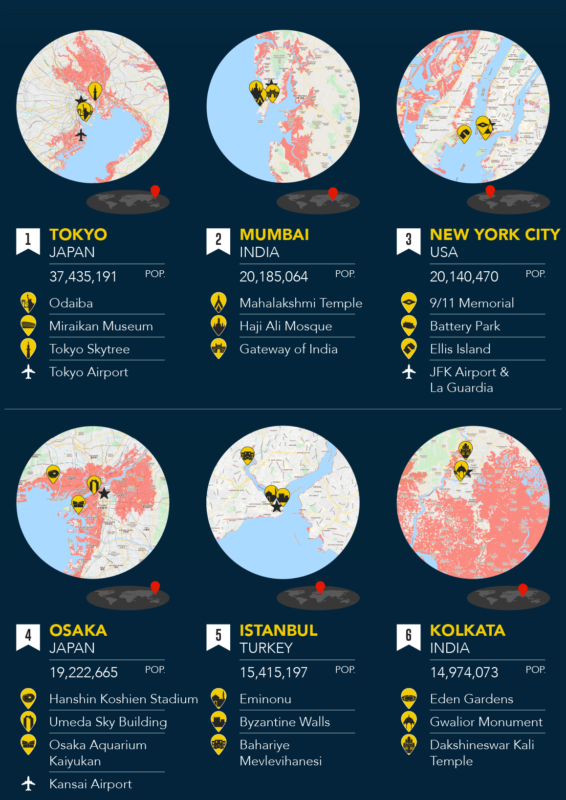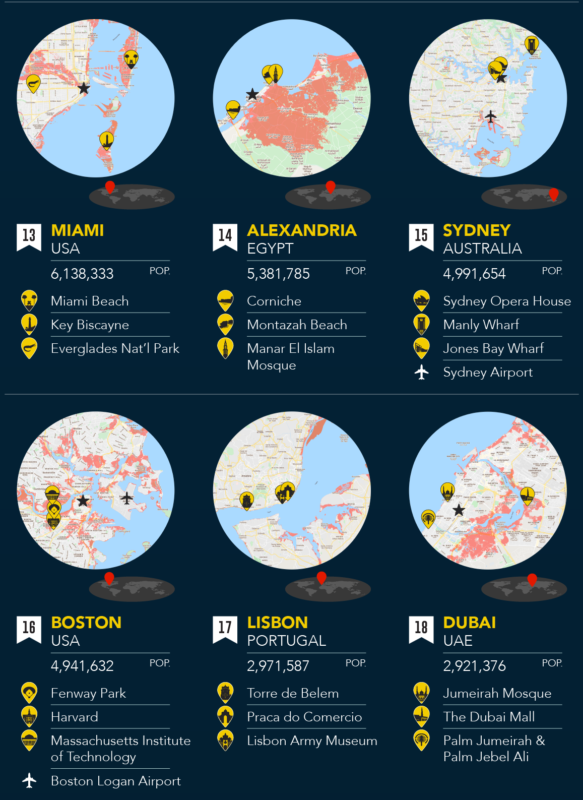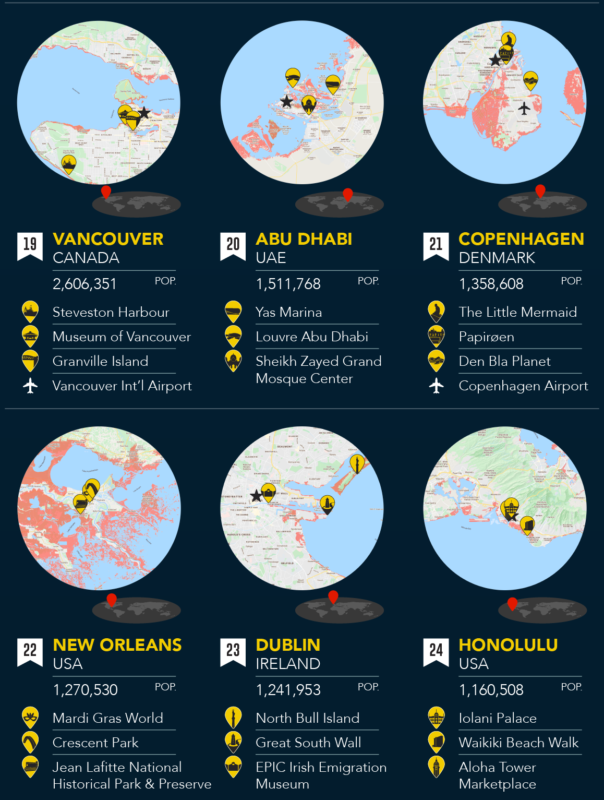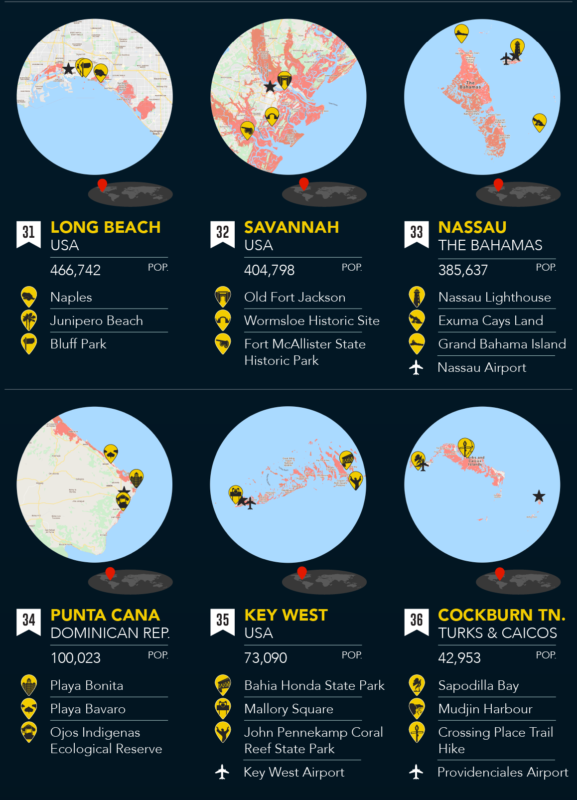Oceans are rising and global cities are sinking—no matter how slow it is happening, there is no denying the crisis. The question that needs to be asked is not whether we will go underwater, but when. No one can say when exactly it will happen, but researchers can forecast which global cities will be flooded first based on simple elevation maps.
According to the researchers of The Swifter, 36 global cities will sink first, putting at risk millions of people, and taking with them some of the beloved sites and landmarks, including Saint Mark’s Basilica in Venice, Waikiki Beach in Honolulu, Miami Beach in Florida, Easter Island in Chile, Maldives, and Eifel in Germany.
Climate Central built a coastal risk screen tool to explore maps by risk area and Euromonitor—this tool is used in The Swiftest’s study to identify 36 of the world’s most visited global cities that will be affected by sea-level rise. World-leading cities are going to look different in the future, but is this the change we want to see?
Which global cities are going to sink?
Floods are becoming more frequent and severe in New York City, with the city facing its first flash flood emergency in recorded history in November 2021. This is a challenge for which New York is not structurally prepared. The Statue of Liberty, one of the city’s most famous tourist attractions, was severely damaged by Hurricane Sandy and is now at risk of significant harm from rising water levels.
The state of Florida is investing $4 billion to avert more damage, particularly in Miami Beach, a renowned tourist destination where over 1,200 properties are currently threatened by flooding. In fact, flooding in this area is becoming a yearly occurrence.
Waikiki Beach in Hawaii, a popular tourist site, is already battling with rising sea levels and requires further protection against coastal erosion. In the previous century, 13 miles of Hawaiian coastline have vanished. Their current efforts to replace beaches with imported sand are costly and only temporary.
The St. Mark’s Basilica in Venice has already been seriously damaged by the water. Despite efforts to implement a flood barrier system, St. Mark’s Square was destroyed in 2020 when it was not used, illustrating that even when infrastructures are in place to mitigate the consequences of the climate catastrophe, they are imperfect and will only fix some of the problems.
While the Maldives already face annual flooding on over 90 islands, and they are expected to lose 80% or more of their islands in the next three decades. The local administration is already making plans to buy property in other nations as a backup plan in case the Maldivian population needs to be relocated.







